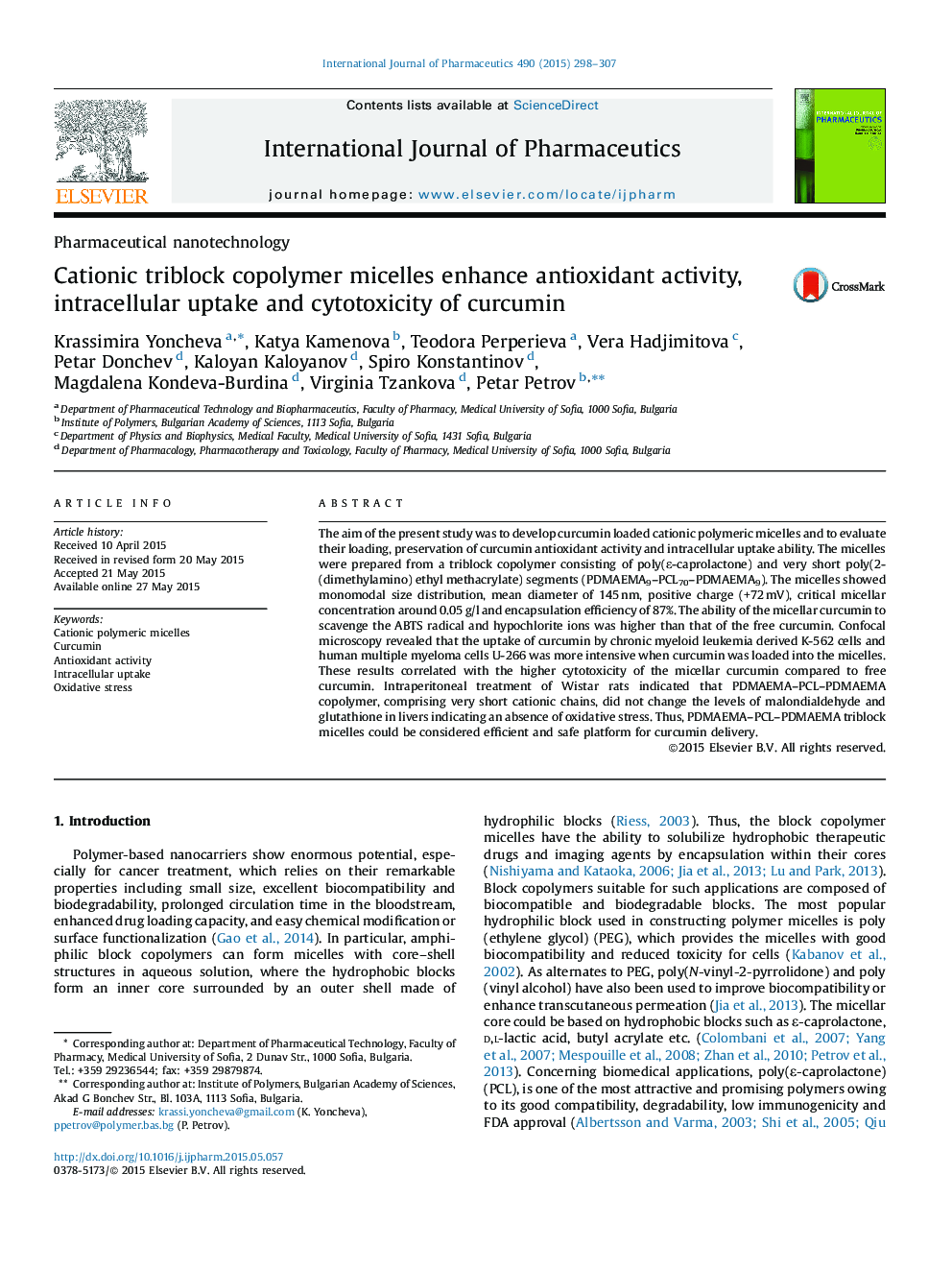| Article ID | Journal | Published Year | Pages | File Type |
|---|---|---|---|---|
| 2501332 | International Journal of Pharmaceutics | 2015 | 10 Pages |
The aim of the present study was to develop curcumin loaded cationic polymeric micelles and to evaluate their loading, preservation of curcumin antioxidant activity and intracellular uptake ability. The micelles were prepared from a triblock copolymer consisting of poly(ϵ-caprolactone) and very short poly(2-(dimethylamino) ethyl methacrylate) segments (PDMAEMA9–PCL70–PDMAEMA9). The micelles showed monomodal size distribution, mean diameter of 145 nm, positive charge (+72 mV), critical micellar concentration around 0.05 g/l and encapsulation efficiency of 87%. The ability of the micellar curcumin to scavenge the ABTS radical and hypochlorite ions was higher than that of the free curcumin. Confocal microscopy revealed that the uptake of curcumin by chronic myeloid leukemia derived K-562 cells and human multiple myeloma cells U-266 was more intensive when curcumin was loaded into the micelles. These results correlated with the higher cytotoxicity of the micellar curcumin compared to free curcumin. Intraperitoneal treatment of Wistar rats indicated that PDMAEMA–PCL–PDMAEMA copolymer, comprising very short cationic chains, did not change the levels of malondialdehyde and glutathione in livers indicating an absence of oxidative stress. Thus, PDMAEMA–PCL–PDMAEMA triblock micelles could be considered efficient and safe platform for curcumin delivery.
Graphical abstractFigure optionsDownload full-size imageDownload high-quality image (169 K)Download as PowerPoint slide
